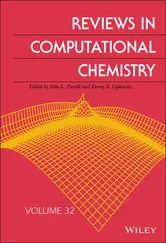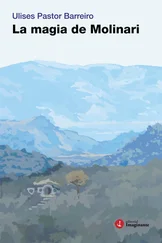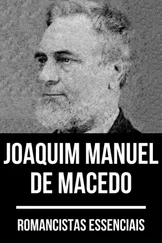Manuel Pastor - Computational Geomechanics
Здесь есть возможность читать онлайн «Manuel Pastor - Computational Geomechanics» — ознакомительный отрывок электронной книги совершенно бесплатно, а после прочтения отрывка купить полную версию. В некоторых случаях можно слушать аудио, скачать через торрент в формате fb2 и присутствует краткое содержание. Жанр: unrecognised, на английском языке. Описание произведения, (предисловие) а так же отзывы посетителей доступны на портале библиотеки ЛибКат.
- Название:Computational Geomechanics
- Автор:
- Жанр:
- Год:неизвестен
- ISBN:нет данных
- Рейтинг книги:4 / 5. Голосов: 1
-
Избранное:Добавить в избранное
- Отзывы:
-
Ваша оценка:
- 80
- 1
- 2
- 3
- 4
- 5
Computational Geomechanics: краткое содержание, описание и аннотация
Предлагаем к чтению аннотацию, описание, краткое содержание или предисловие (зависит от того, что написал сам автор книги «Computational Geomechanics»). Если вы не нашли необходимую информацию о книге — напишите в комментариях, мы постараемся отыскать её.
Computational Geomechanics: Theory and Applications, Second Edition
Computational Geomechanics — читать онлайн ознакомительный отрывок
Ниже представлен текст книги, разбитый по страницам. Система сохранения места последней прочитанной страницы, позволяет с удобством читать онлайн бесплатно книгу «Computational Geomechanics», без необходимости каждый раз заново искать на чём Вы остановились. Поставьте закладку, и сможете в любой момент перейти на страницу, на которой закончили чтение.
Интервал:
Закладка:
Despite a large number of authors, we have endeavored to present a unified approach and have used the same notation, style, and spirit throughout. The first three chapters present the theory of porous media in the saturated and unsaturated states and thus establish general backbone to the problem of soil mechanics.
Even though the fundamental nature of the basic theory remains unchanged as shown in Chapters 2and 3, many of the other chapters have been substantially updated. The following part of the book has been extensively restructured, reworked, and updated, and new chapters have been added such as to cover essentially all the important aspects of computational soil mechanics.
Chapter 4, essential before numerical approximation, deals with the very important matter of the quantitative description of soil behavior which is necessary for realistic computations. This chapter has been substantially rewritten such as to introduce new developments. It is necessarily long and devotes a large part to generalized plasticity and critical‐state soil mechanics and also includes a simple plasticity model. The generalized plasticity model is then extended to partially saturated soil mechanics. Presentation of alternative advanced models such as bounding surface models and hypoplasticity concludes the chapter.
Chapter 5addresses some special aspects of analysis and formulation such as far‐field solutions in quasi‐static problems, input for earthquake analysis and radiation damping, adaptive finite element requirements, the capture of localized phenomena, regularization aspects and stabilization for nearly incompressible soil behavior both in dynamics and consolidation permitting to use equal order interpolation for displacements and pressures.
Chapter 6presents applications to static problems, seepage, soil consolidation, hydraulic fracturing, and also examples of dynamic fracturing in saturated porous media. Validation of the predictions by dynamic experiments in a centrifuge is dealt with in Chapter 7.
Chapter 8is entirely devoted to application in unsaturated soils, including the dynamic analysis with a full two‐phase fluid flow solution, analysis of land subsidence related to exploitation of gas reservoirs, and initiation of landslides.
Chapter 9addresses practical prediction, application, and back analysis of earthquake engineering examples. Finally, Chapter 10pushes the limits of the analysis beyond failure showing the modeling of fluidized geomaterials with application to fast catastrophic landslides.
We are indebted to many of our coworkers and colleagues and, in particular, we thank the following people who over the years have contributed to the work (in alphabetical order of their surnames):
T. Blanc,
G. Bugno,
T.D. Cao,
P. Cuéllar,
S. Cuomo (MP),
P. Dutto,
E. González,
B. Haddad,
M.I. Herreros,
Maosong Huang,
E. Kakogiannou,
M. Lazari,
Chuan Lin,
Hongen Li,
Li Tongchun,
Liu Xiaoqing,
D. Manzanal,
M. Martín Stickle
A. Menin,
J.A. Fernández Merodo,
E. Milanese,
P. Mira,
M. Molinos,
S. Moussavi,
R. Ngaradoumbe Nanhornguè,
P. Navas,
T. Ni,
Jianhua Ou,
M. Passarotto,
M.J. Pastor,
C. Peruzzo,
F. Pisanò,
M. Quecedo,
V. Salomoni,
L. Sanavia,
M. Sánchez‐Morles,
R. Santagiuliana,
R. Scotta,
S. Secchi,
Y. Shigeno,
L. Simoni,
C. Song,
A. Yagüe,
Jianhong Ye,
M. Yoshizawa,
H.W. Zhang.
Finally, we would like to dedicate this edition to the memory of the Late Oleg Cecil Zienkiewicz. Without his inspiration and enthusiasm, we would not have undertaken the research work reported here. We would also like to thank our beloved Late Helen Zienkiewicz, wife of Professor Zienkiewicz, who kindly allowed us to celebrate Oleg’s decades of pioneering and research field defining achievements in computational geomechanics.
Andrew H. C. Chan
Manuel Pastor
Bernhard A. Schrefler
Tadahiko Shiomi
Hobart, Madrid, Padua, Tokyo, January 2022
1 Introduction and the Concept of Effective Stress
1.1 Preliminary Remarks
The engineer designing such soil structures as embankments, dams, or building foundations should be able to predict the safety of these against collapse or excessive deformation under various loading conditions which are deemed possible. On occasion, he may have to apply his predictive knowledge to events in natural soil or rock outcrops, subject perhaps to new, man‐made conditions. Typical of this is the disastrous collapse of the mountain (Mount Toc) bounding the Vajont reservoir which occurred on 9 October 1963 in Italy (Müller 1965). Figure 1.1shows both a sketch indicating the extent of the failure and a diagram indicating the cross section of the encountered ground movement.
In the above collapse, the evident cause and the “straw that broke the camel’s back” was the filling and the subsequent drawdown of the reservoir. The phenomenon proceeded essentially in a static (or quasi‐static) manner until the last moment when the moving mass of soil acquired the speed of “an express train” at which point, it tumbled into the reservoir, displacing the water dynamically and causing an unprecedented death toll of some 4000 people from the neighboring town of Longarone.
Such static failures which occur, fortunately at a much smaller scale, in many embankments and cuttings are subjects of typical concern to practicing engineers. However, dynamic effects such as those frequently caused by earthquakes are more spectacular and much more difficult to predict.
We illustrate the dynamic problem by the near‐collapse of the Lower San Fernando dam near Los Angeles during the 1971 earthquake ( Figure 1.2) (Seed, 1979; Seed et al. 1975). This failure, fortunately, did not involve any loss of life as the level to which the dam “slumped” still contained the reservoir. Had this been but a few feet lower, the overtopping of the dam would indeed have caused a major catastrophe with the flood hitting a densely populated area of Los Angeles.
It is evident that the two examples quoted so far involved the interaction of pore water pressure and the soil skeleton. Perhaps the particular feature of this interaction, however, escapes immediate attention. This is due to the “weakening” of the soil–fluid composite during the periodic motion such as that which is involved in an earthquake. However, it is this rather than the overall acceleration forces which caused the collapse of the Lower San Fernando dam. What appears to have happened here is that during the motion, the interstitial pore pressure increased, thus reducing the interparticle forces in the solid phase of the soil and its strength. 1
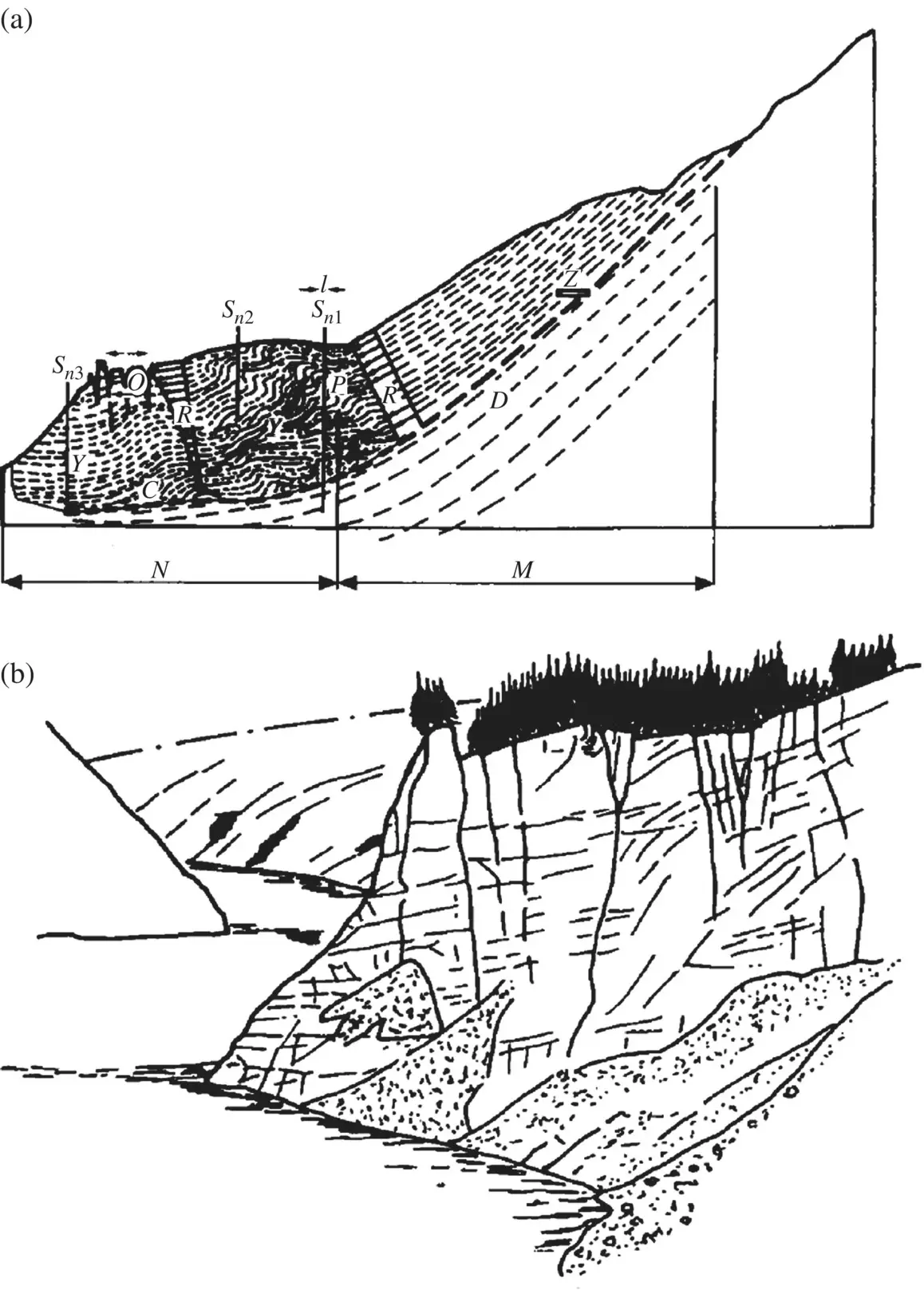
Figure 1.1 The Vajont reservoir, failure of Mant Toc in 1963 (9 October): (a) hypothetical slip plane; (b) downhill end of the slide (Müller, 1965). Plate 1 shows a photo of the slides (front page).
This phenomenon is well documented and, in some instances, the strength can drop to near‐zero values with the soil then behaving almost like a fluid. This behavior is known as soil liquefaction and Plate 2 shows a photograph of some buildings in Niigata, Japan taken after the 1964 earthquake. It is clear here that the buildings behaved as if they were floating during the active part of the motion.
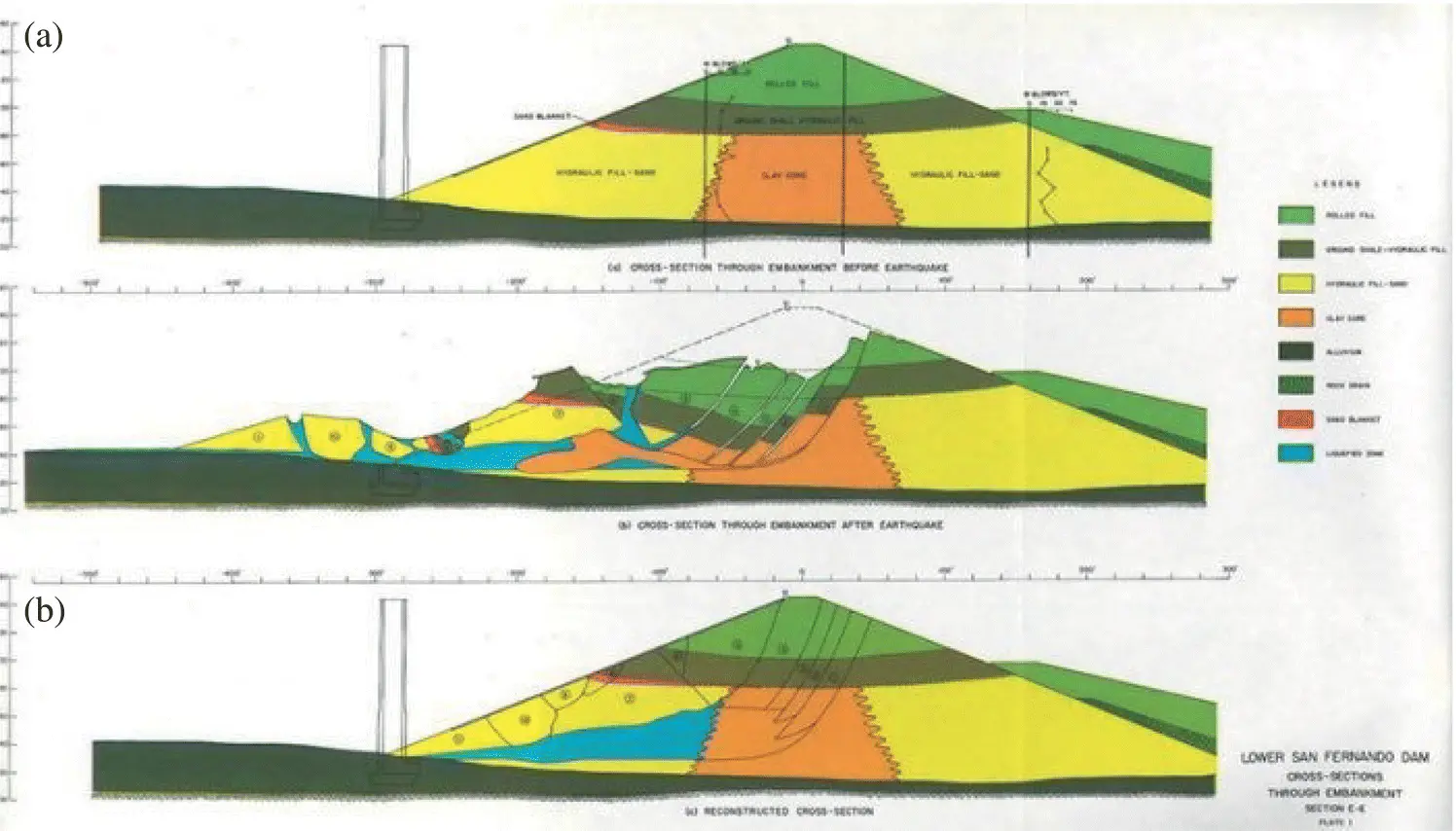
Figure 1.2 Failure and reconstruction of original conditions of Lower San Fernando dam after 1971 earthquake, according to Seed (1979): (a) cross section through embankment after the earthquake; (b) reconstructed cross section.
Читать дальшеИнтервал:
Закладка:
Похожие книги на «Computational Geomechanics»
Представляем Вашему вниманию похожие книги на «Computational Geomechanics» списком для выбора. Мы отобрали схожую по названию и смыслу литературу в надежде предоставить читателям больше вариантов отыскать новые, интересные, ещё непрочитанные произведения.
Обсуждение, отзывы о книге «Computational Geomechanics» и просто собственные мнения читателей. Оставьте ваши комментарии, напишите, что Вы думаете о произведении, его смысле или главных героях. Укажите что конкретно понравилось, а что нет, и почему Вы так считаете.



